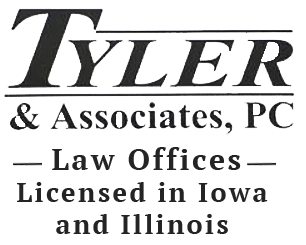Winters in Cedar Rapids and across Iowa are freezing, dry and windy. If your job has you working outdoors, your employer has a significant responsibility to keep you safe. It is crucial for you and your co-workers to know about the dangers of cold stress and how to recognize the symptoms.
Furthermore, safety training must include the steps to take if you are experiencing cold stress symptoms. It is always a good idea to have a buddy system in place whereby pairs of workers keep an eye on each other. One of the most significant risks of working alone in the cold is the fact that you could become disoriented and unable to get yourself to safety.
How can you keep the cold out?
Your employer has a variety of responsibilities when it comes to outdoor workers, but there are steps for you to take before you even get to work. You can do the following to keep your body warm:
- Avoid tight fitting clothing that can reduce blood circulation to your extremities, which are most vulnerable when you work in a cold environment.
- To prevent your body heat from escaping through your head, wear a hat that can also keep your ears warm.
- In icy conditions, it would be wise to wear a knit mask to cover your face and mouth.
- Protect your feet by wearing waterproof, insulated boots.
- Protect your hands by wearing insulated, water-resistant gloves.
Never lose sight of the fact that frostbite typically affects your extremities like your fingers, toes, nose and ears, and leaving those areas unprotected could lead to amputations.
The three-layer dress rule
Whenever you have to spend hours working in the cold, dressing in layers as follows provides the best protection and insulation:
- Start with a layer thermal wear made of silk, wool or synthetic material next to your skin to keep moisture out. Cotton is not the best choice.
- Then, add another layer of synthetic or wool that will serve as insulation when you get wet.
- The third and outer layer must protect you from rain and wind. However, make sure it allows ventilation to prevent your body from overheating.
Keep in mind that wind can cause a rapid drop in temperature, making protection against both wind and rain crucial.
What your employer must include in safety training
Remember that you have the right to workplace safety, and you are entitled to adequate safety training. The following should form a part of the training:
- Your employer must make sure you know of all the winter hazards, including cold stress, downed power lines, windy conditions, and slippery roads and other surfaces.
- You must learn to recognize winter hazards and how to mitigate them by using safe work practices, engineering controls and proper equipment selection for the job.
- It is crucial to learn about cold stress symptoms because the failure to take prompt action can lead to unconsciousness or death.
- Your employer must teach you and your co-workers about self-monitoring for cold stress red flags as well as how to monitor each other.
- Training should include basic first aid and the proper procedures in emergencies when you need additional medical assistance.
If you fall victim to hypothermia, frostbite, trench foot or any other cold stress condition this winter, make sure you get the necessary medical care. Workers’ compensation benefits will cover the medical bills. If your condition causes days away from work, you will likely also receive a wage-replacement package. To improve your chances of obtaining maximum benefits under applicable laws, you can utilize the skills of an experienced Iowa workers’ compensation attorney.

